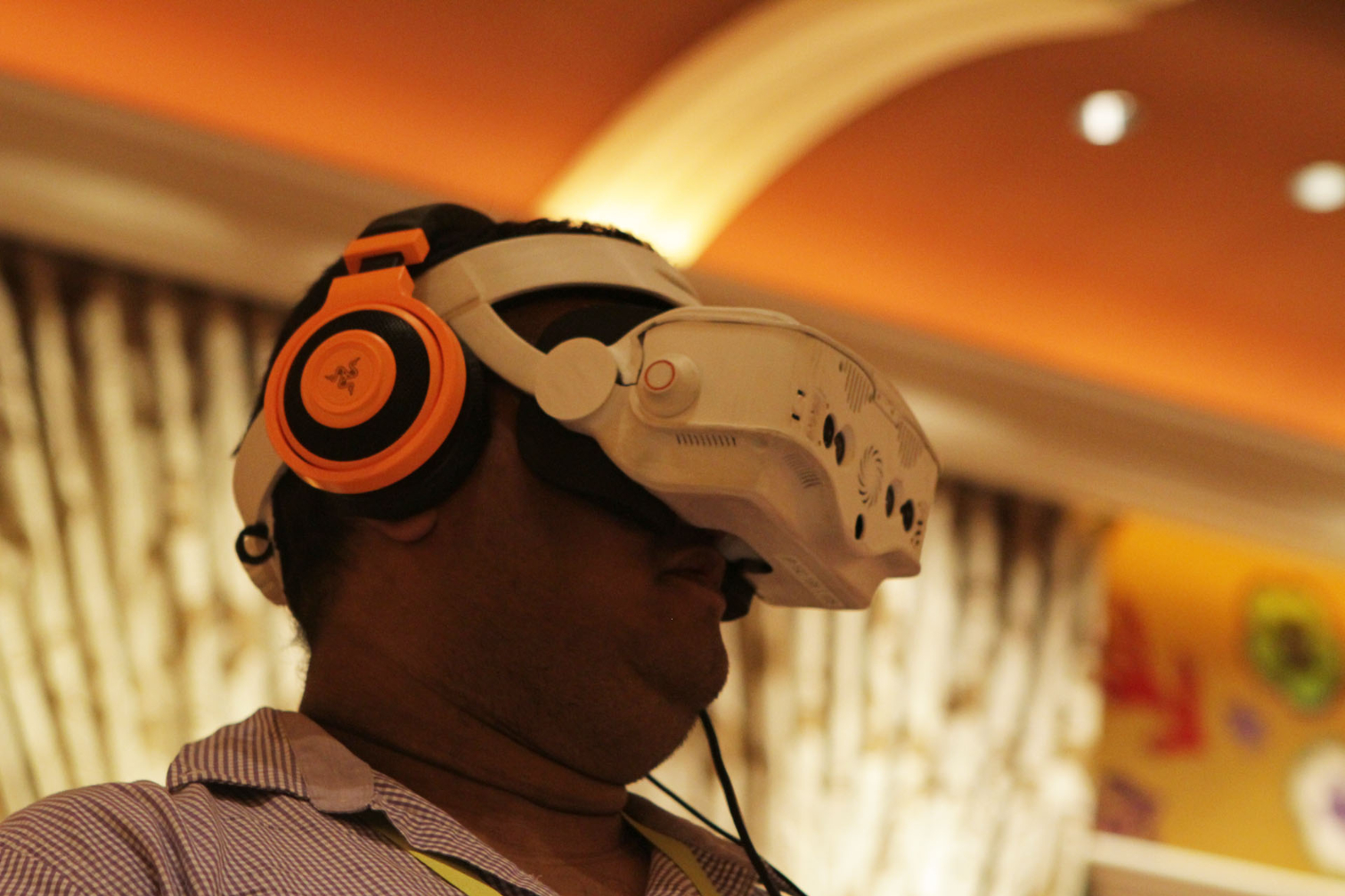Apple Scores Mixed Reality Win (Again) With Vrvana Acquisition
I almost missed the demo entirely. In the chaos and blur of CES 2017, I’d booked breakfast with the two representatives from Vrvana, a tiny upstart company making a mixed reality headset, but had failed to allow enough time for an actual demo of the device. But Kevin Carbotte, our VR reviewer, who saw and was blown away by the Vrvana Totem when he’d see it a few months earlier at Immersed, had admonished me before CES to make sure I saw the Totem myself.
So with profuse apologies, I asked the Vrvana guys if I could catch up with them later in the week. They graciously agreed. Eventually, it turned out, CEO Bertrand Nepveu left a party early to meet me and the Tom’s Hardware team in a casino hallway--Vrvana didn’t have a booth--and showed us his company’s creation: a true mixed reality headset.
It was just a 3D printed prototype, but it’s still the best mixed reality demo we’ve ever seen.
And now, according to TechCrunch, Apple has scooped up the Canadian startup for $30 million.
Apple has not commented, and Vrvana is presently silent on the subject, as well. We’ve been led to believe that the deal is perhaps not actually official yet, but the PR silence and TechCrunch’s sources are a strong indicator that it’s all but a formality at this point.
This is the latest in a long line of XR-related acquisitions by Apple. These include Metaio, a promising AR company we were impressed with at Mobile World Congress a couple of years ago, as well as eye-tracking company SMI.
Yet despite all these acquisitions, and public proclamations from no less than Apple CEO Tim Cook himself about the promise that AR holds, it’s unclear what exactly the company is up to. It seems unlikely that Apple will produce a VR headset like the Rift and Vive, and until the Vrvana acquisition, there was no word about a mixed reality headset, either. Everything has pointed to AR. Indeed, the one thing Apple has made in the XR space so far is ARkit.
Get Tom's Hardware's best news and in-depth reviews, straight to your inbox.
So what is Apple doing buying a mixed reality company like Vrvana? One possibility is that this was purely a talent acquisition. The demo unit we saw was built when Vrvana had little money (for a startup of this ilk) and just five employees (there are currently 17 listed on LinkedIn). Some of them are surely superstars; the Totem was impressive, in large part, because it was clever. For example, the “Matrix Mode” ran on the HMD itself whereas other parts of the experience required a connected PC’s resources.
In other words, Vrvana didn’t just raise a ton of money and throw engineers at a problem. They innovated. These guys, if you’ll forgive the turn of phrase, “think different.”
But of course, there’s plenty of IP to be had, too. For example, the camera features on the Totem worked exceptionally well. There were infrared cameras for positional tracking and hand tracking, but also RGB cameras for AR. And although the Totem is an occluded HMD, it uses camera passthrough to let you “see” the real world. Since we saw this feature work so well on the Totem, we’ve asked every HMD maker we meet with--especially “mixed reality” giant Microsoft--why they don’t have the same. They all point to latency as the main problem, but the Totem demo was perfectly comfortable for us. That was a 14ms lag; Nepveu has stated that they now have it down to 3ms.
One can imagine how clever and fast camera and tracking technology could be applied to even a lightweight pair of AR glasses.
Vrvana had more irons in the fire than just the Totem, and perhaps that’s more of what Apple is interested in, but whatever the case, Vrvana’s people and tech are going to contribute to Apple’s XR future. It’s hard to predict what kind of XR hardware Apple is going to actually build--maybe a HoloLens competitor, maybe smartglasses for consumers, etc.--but its acquisitions are helping it get where it wants to go.
Seth Colaner previously served as News Director at Tom's Hardware. He covered technology news, focusing on keyboards, virtual reality, and wearables.
-
bit_user Reply
Thanks for this. Good info.20404833 said:we’ve asked every HMD maker we meet with--especially “mixed reality” giant Microsoft--why they don’t have the same. They all point to latency as the main problem
As for latency, I would think MS' Hololens would have to solve the same problem, since it has to track the HMD and render the CG overlays to be exactly in sync with the real world imagery that you see through the visor.

